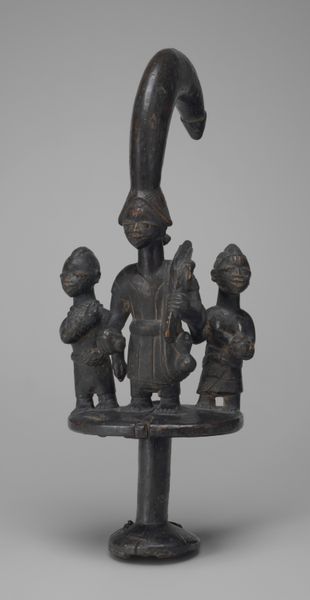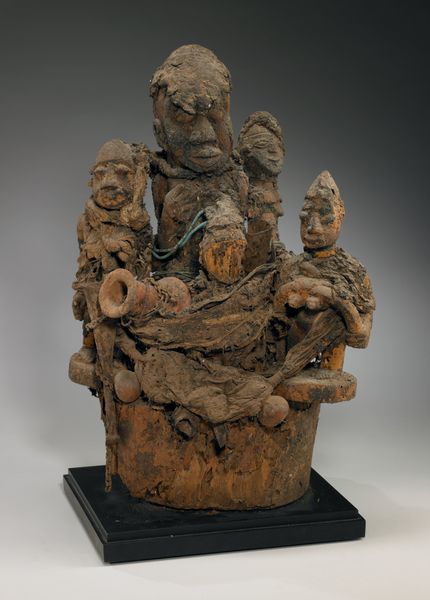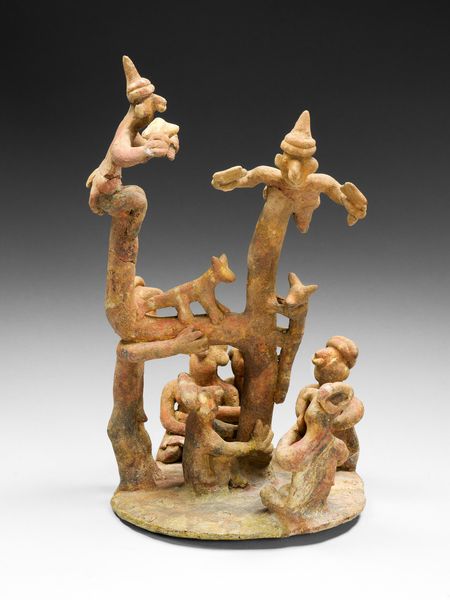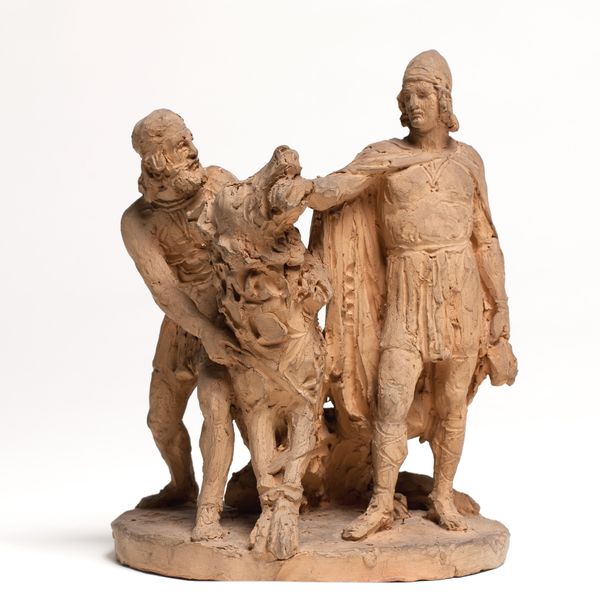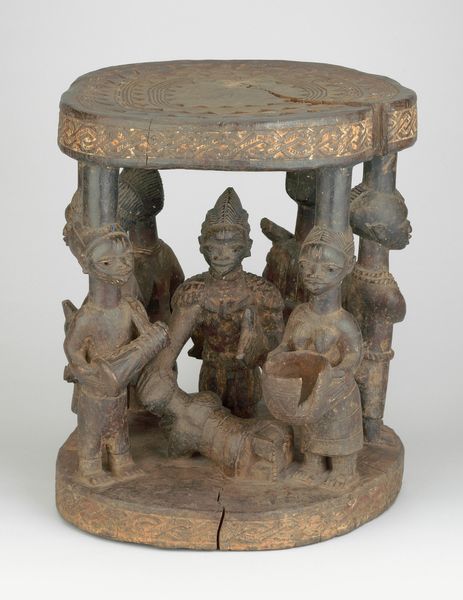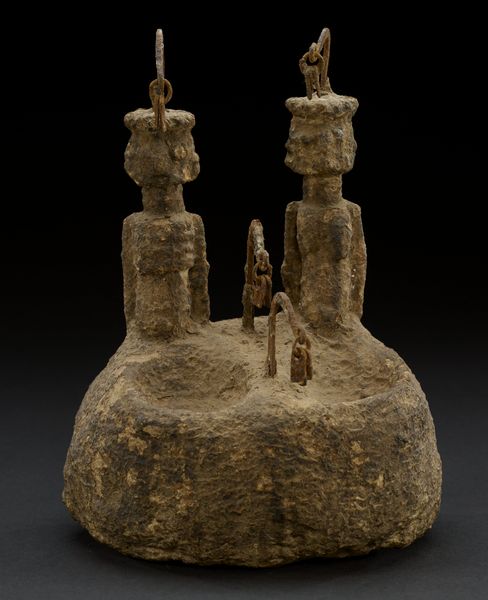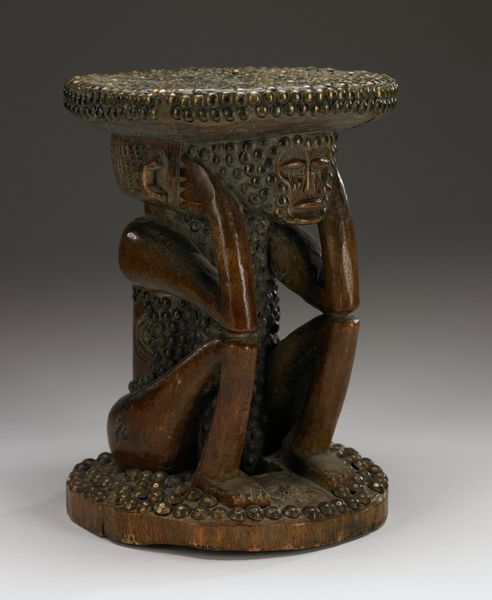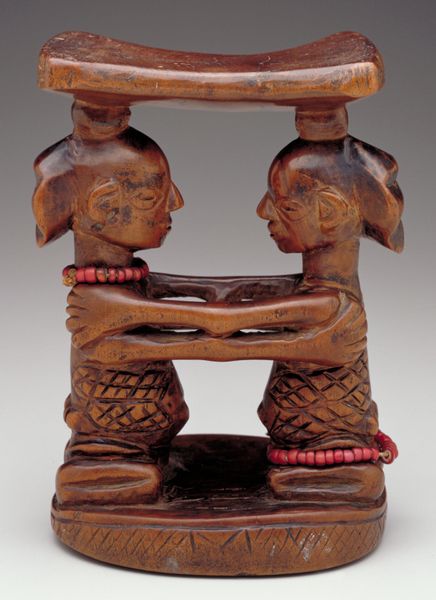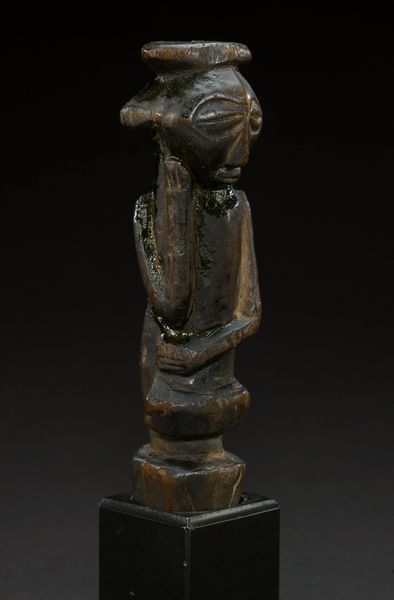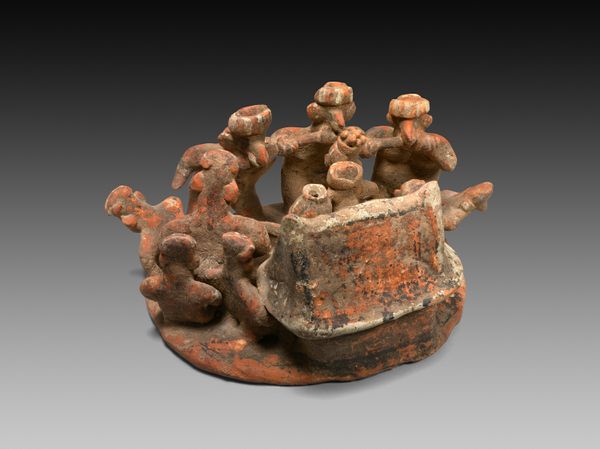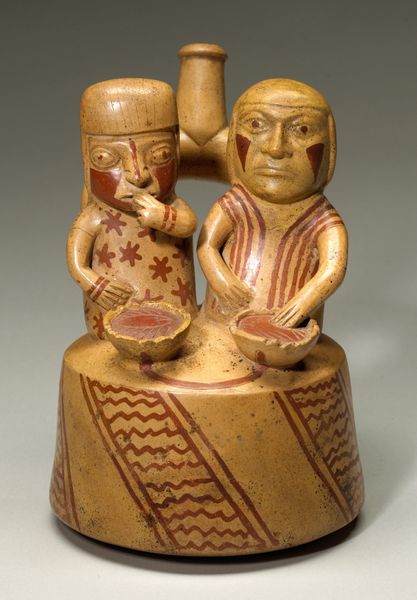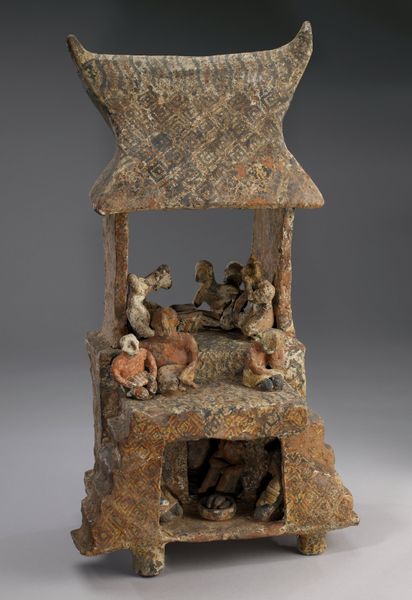
carving, sculpture, wood
#
african-art
#
carving
#
sculpture
#
figuration
#
sculpture
#
wood
#
yoruba-art
Dimensions: 9 x 10 1/2 x 10 in. (22.9 x 26.7 x 25.4 cm)
Copyright: Public Domain
Curator: Standing before us is a striking divination tray, carved by a Yoruba artist around the mid-20th century. It is now part of the Minneapolis Institute of Art's collection. Editor: The initial impression is rather somber. The dark wood and the stylized figures create an atmosphere of solemnity, almost of ritual. There's a grounded, powerful presence to it. Curator: Indeed, the Yoruba tradition relies heavily on divination, which involves consulting deities for guidance. These trays are not mere objects but critical interfaces used by priests to communicate with the spiritual realm. The material choice also seems pertinent to the social realities of mid-century Yoruba culture, considering shifts in political landscapes that affected indigenous artisanal practices. Editor: Symbolically, the figures arranged around the tray's edge feel significant. Can you tell me more about who they represent and what roles they played? I can see some similarity with the ideograms, or are they visual narratives reflecting beliefs? Curator: Absolutely. Often, we see representations of Eshu, the trickster god, who acts as a mediator between gods and humans. We also encounter images of other deities, ancestors, or influential figures. Each carving serves as a visual signifier for different powers or stories. The figures themselves are arranged, forming the parameters of what constitutes Yoruba identity and social history. Editor: That context illuminates the potential depths behind such understated figuration. What might someone from the Yoruba community in that era take away, experiencing their culture so reverently rendered in sculptural form? Is the horse motif significant too? Curator: Well, within a wider Yoruba context, they would experience a connection to their ancestral wisdom, the continuation of oracular practices. The horse is an animal symbolic of power, so its inclusion highlights status, and hints to larger political struggles that framed its use. Also the carving likely references Ifá divination. The arrangement acts as a kind of script, allowing a deeper communal engagement within colonial influences. Editor: It's compelling to view art like this as a form of resistance, too, not just as cultural preservation. It transforms our sense of time too; what at first seemed like wood figures, quickly turns into a cultural palimpsest. Curator: Precisely. Understanding the work through that lens, not only honors the original context but also prompts relevant questions about contemporary modes of artistic activism. Editor: Well, after today, I shall regard seemingly 'simple' images with much more scrutiny! Thanks for broadening my view!
